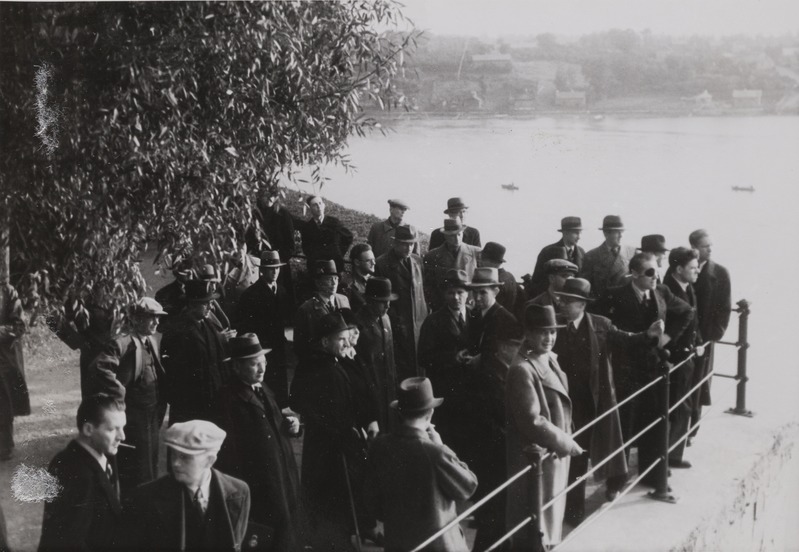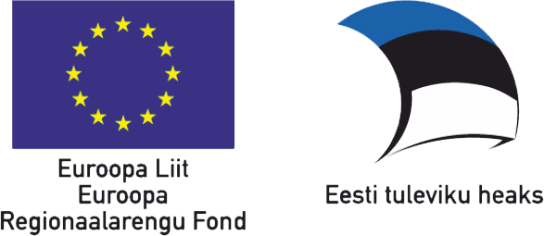Narva, an Industrial Border City: Literary Reflections
Symposium in literary urban studies and discussion day

Narva, an Industrial Border City. Literary Reflections
Symposium in literary urban studies
at the University of Tartu Narva College on 13 and 14 September 2018
13 September, room 215
I Welcome and Introductions. Setting the Scene
10.30 Elle-Mari Talivee, Anu Printsmann
10.40 Elle-Mari Talivee (Under and Tuglas Literature Centre of the Estonian Academy of Sciences), A photographic trace of Narva in the collections of Friedebert Tuglas. Some links between Estonian literature and the (East)Viru region
10.55 Anu Printsmann (Tallinn University), Émile Zolaʼs Germinal and Raimond Kaugverʼs In the Seventh West. A comparison from a geographerʼs point of view
11.10 Kri Marie Vaik (Under and Tuglas Literature Centre of the Estonian Academy of Sciences), Naturalism in Eduard Vildeʼs novel Iron Hands
11.15 Marianne Lind (Under and Tuglas Literature Centre of the Estonian Academy of Sciences), Ugly Cities of Jaan Oks and Knut Hamsun
11.25 Discussion
II The Poetics of Industrial and Border Cities
11.45 Karoliina Lummaa (University of Turku), Urban metabolisms and everyday Anthropocene poetics
12.00 Tarmo Pikner (Tallinn University), Disturbances and degrowth utopias
12.15 Andrei Vinogradov (Kazan Federal University), ‘Promising land’ struggle with industrial pollution of the environment in imperial Lodz (1880–1917)
12.30 Jason Finch (Åbo Akademi University), Mobilizing a Riverine Border City. Plans and Memoirs of St Louis, 1910–60
12.45 Discussion
III Focusing on Narva
14.30 Ene-Reet Soovik (University of Tartu), Narva as a warscape on page and stage
14.45 Mait Sepp (University of Tartu) A theatre of wars. Memorials of the Great Northern War in Narva
15.00 Reet Bender and Marika Peekmann (University of Tartu), Narva in Baltic German autobiographies – a realm of memory or just a memorable place?
15.15 Discussion
IV Hydroelectricity from a human(itarian) perspective
16.00 Kadri Tüür (University of Tartu), Damming rivers: Sense of loss (in fiction and non-fiction)
On Skype: Viktor Pal (Higher School of Economics, St Petersburg) Technological and environmental aspects of hydropower projects in the Soviet Bloc under the Cold War and Julia Tofantšuk (Tallinn University) The agency of nature vs Soviet technological anti-nature in Valentin Rasputinʼs Farewell to Matyora
16.30 Jaan Undusk, Elle-Mari Talivee (Under and Tuglas Literature Centre of the Estonian Academy of Sciences) Comments on the film In Sunshine and in Rain (Vihmas ja päikeses, 1960) on the building of a power plant
Final Q&A and Discussion
Conclusion: Kadri Tüür and Jason Finch
Palume tööseminarile registreeruda e-postiaadressil ellemari@utkk.ee.
14 September, auditoorium 215. Ettekannete lühikokkuvõtted vene keeles iga ettekande järel.
10.30 Ingrid Velbaum-Staub (Eesti Kirjanike Liit), Anu Printsmann, Kadri Tüür, Elle-Mari Talivee Narva, piiri- ja tööstuslinn: kirjanduslikke kajastusi. Kokkuvõte tööseminarist
10.50 Heili Sepp (Viru Maakohus), The Broken Axis of Juhkental. A Different Kind of Heart
11.10 Aare Pilv (Underi ja Tuglase Kirjanduskeskus), Kuidas teha Kreenholmist kunstiteost
11.30 Kaie Metsaots (Eesti Maaülikool), Tööstuspärand, identiteet, väljakutsed, võimalused
11.50 Tiit Aleksejev (Eesti Kirjanike Liit), Linnast ja mälust
Küsimused ja arutelu
13.30 Kreenholmi ekskursioon
Palume ettekandepäevale ja ekskursioonile registreeruda e-postiaadressil ellemari@utkk.ee. Ekskursioonile on mõned vabad kohad.
Call for Papers
Studying city literature offers a rich interdisciplinary field for researchers to engage in. In autumn 2018 a meeting on literary urban studies will take place in Narva, an important border city and a commercial and industrial centre of historical significance. Contemporary Narva is also a hotbed of intriguing ideas. This is evident e.g. in the fascinating architecture of the building of the Narva College of the University of Tartu – a highly innovative educational building project on the Eastern border of the EU that has merited numerous prizes (ArchDaily 2013), as well as the exciting publications of the Narva Museum, the documentary film “Paper City” , and the intention of the President of the Republic of Estonia to move her seat temporarily to Narva in the coming autumn. Narva is an Estonian candidate city for the European Capital of Culture 2024.
Literary Narva has a broad scope. In 1898, Eduard Vilde published the novel Iron Hands, inspired by the Narva Kreenholm textile mill. The history of Narva and Sillamäe has been addressed by Andrei Hvostov, the Narva of memories reflected on by Albert Üksip, the lost Narva recalled by Adolf Rammo, Vladimir Beekman and Tiit Aleksejev (Hinrikus 2011, Talivee 2017).
We are suggesting two possible angles of approach.
A framework that has been gaining increasingly more attention recently is boundary studies. Boundaries are not seen as political or administrative lines of separation, but rather as sociocultural, environmental, economic and temporal processes that are being created by public practices and individual choices. Boundaries can be natural and visible in the landscape, but they can also be fully imaginary. Natural boundary regions often create contact zones that offer various opportunities for interaction and movement for humans as well as other species. Boundary regions are dynamic, compelling a constant engagement with issues of identity and of similarity and difference. Literary works concerned with Narva, as well as several other cultural phenomena in Estonia, will certainly provide fruitful material for study from these perspectives.
The biannual conference of the European Society for Environmental History taking place in Tallinn in 2019 will also focus on the topics of boundary studies; the Narva symposium could serve as a preparatory step towards the upcoming event. Is the relationship between the shaping of public space, dwelling and identity more acutely reflected in this city than elsewhere? It certainly emerges, at least occasionally, as a boundary region in Juri Lotman’s sense – that is, a site of creative contacts (Lotman 2005). Yet what are border cities like in general?
Secondly, from the perspective of technology studies we may enquire if Narva as a border city (observed in connection with, e.g., political boundaries, but also with the thresholds between nature and artifice, surface and the underground, the past and the future) exhibits a dependence of the social environment on the natural surroundings, and whether industrial aesthetics can be perceived here. Are the industrial and the beautiful in a negative correlation in an industrial city, or does a decrease in power diminish the beauty? Can the example of Narva serve to discuss the possible unfeasibility of restoring earlier associations, while the changed situation can be evaluated for its new value (e.g. recreational, cultural, heritage-related)? Can this be seen as reflected in the project of the Narva College building and the city’s more general planning policy?
Is Narva a city of more question than answers?
We invite you to address these topics, first and foremost in connection with literature. The working languages are English (symposium) and Estonian/Russian (public day, summarising also the results of the symposium). Attendance is free.
Organizing committee
- Elle-Mari Talivee (Under and Tuglas Literature Centre of the Estonian Academy of Sciences)
- Anu Printsmann (Centre for Landscape and Culture, School of Humanities, Tallinn University)
- Kadri Tüür (Centre for Environmental History, Institute of History, Archaeology and Art History, Tallinn University)
- Jason Finch (Åbo Akademi University)
- The event is taking place in cooperation with the Association for Literary Urban Studies (ALUS)
References
- “Narva College / Kavakava Architects,” ArchDaily, 14 August 2013, www.archdaily.
- Hinrikus, Rutt. “Andrei Hvostov. Sillamäe passioon. Passion for Sillamäe.” Estonian Literary Magazine 2011/2, 32–34.
- Lotman, Juri. „On the Semiosphere” 2005[1984]. Sign Systems Studies 33/1, lk 205–229.
- Talivee, Elle-Mari. “Narva: A Literary Border Town.” 2017. In Literary Second Cities, edited by Jason Finch, Lieven Ameel, and Markku Salmela. London: Palgrave Macmillan, 151–172.
Symposium is supported by the Under and Tuglas Literature Centre of Estonian Academy of Sciences Astra project.
Warning: Undefined property: stdClass::$sponsors_title in /data01/virt99046/domeenid/www.utkk.ee/htdocs/wp-content/uploads/cache/ff31c86d54a729eaa705879dc283c3c2984e3764.php on line 160

